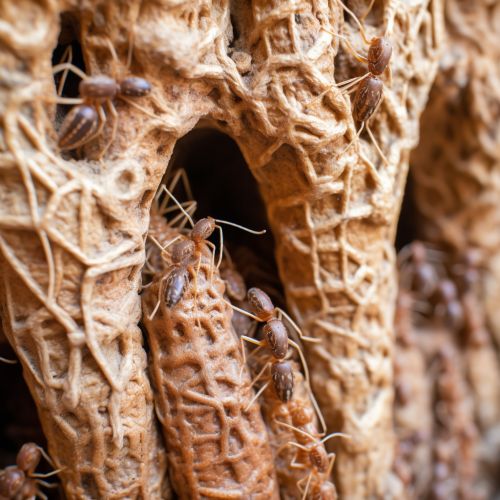The Evolution of Eusociality in Termites
Introduction
Eusociality, a form of social organization characterized by cooperative brood care, overlapping generations, and a division of labor between reproductive and non-reproductive individuals, is a phenomenon observed in several animal groups, including termites Eusociality in Insects. Termites, members of the order Isoptera, have evolved a unique form of eusociality that differs significantly from that of other eusocial insects such as bees, ants, and wasps. This article explores the evolution of eusociality in termites, delving into the genetic, environmental, and behavioral factors that have contributed to this complex social structure.


Evolutionary Origins of Eusociality in Termites
The evolution of eusociality in termites is believed to have occurred around 150 million years ago during the Jurassic period. Unlike other eusocial insects, termites evolved from a wood-dwelling, hemimetabolous ancestor, likely a cockroach-like insect Cockroach Evolution. This ancestral insect was solitary, but the shift to a wood-dwelling lifestyle likely facilitated the evolution of eusociality by providing a stable, resource-rich environment.
Genetic Factors in the Evolution of Eusociality
Genetic factors have played a significant role in the evolution of eusociality in termites. The genome of termites has been found to contain a high number of genes related to caste differentiation and social behavior Genome Sequencing. These genes, which are likely the result of both gene duplication and positive selection, have allowed termites to develop a complex caste system with distinct roles for workers, soldiers, and reproductive individuals.
Environmental Factors in the Evolution of Eusociality
Environmental factors have also contributed to the evolution of eusociality in termites. Termites are primarily tropical and subtropical insects, and their eusocial behavior may have evolved as a response to the challenges posed by these environments. For example, the high temperatures and humidity of tropical forests can promote the growth of harmful fungi and bacteria, and the cooperative behavior of termites may have evolved as a defense against these pathogens Tropical Forest Ecology.
Behavioral Factors in the Evolution of Eusociality
Behavioral factors have also played a key role in the evolution of eusociality in termites. One of the most notable of these is the practice of trophallaxis, or the exchange of food and other fluids between colony members. This behavior, which is unique to termites and a few other insect groups, promotes social cohesion and allows for the efficient distribution of resources within the colony Trophallaxis in Insects.
Conclusion
The evolution of eusociality in termites is a complex process that has been influenced by a variety of genetic, environmental, and behavioral factors. While much is still unknown about this process, ongoing research continues to shed light on the unique social structure of these fascinating insects.
